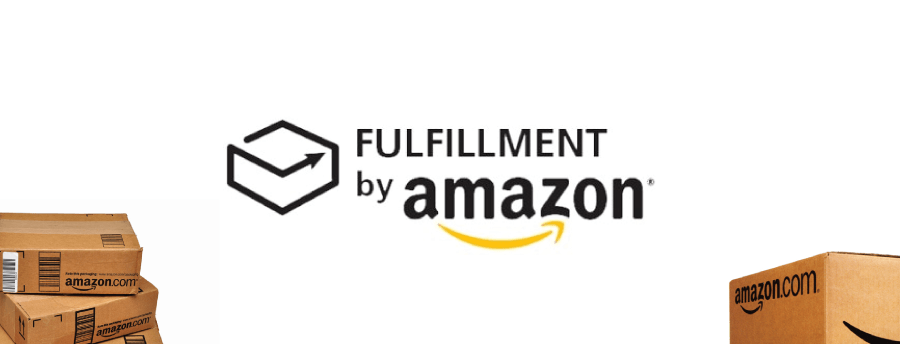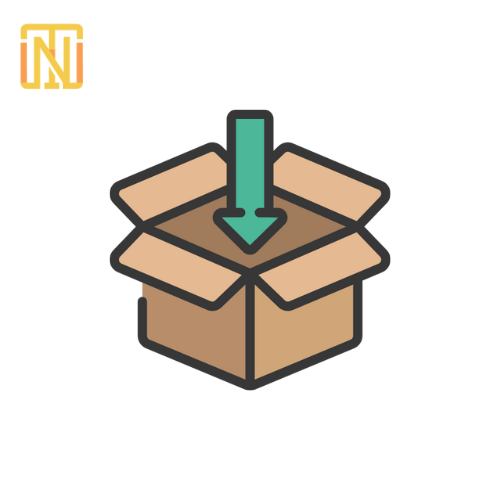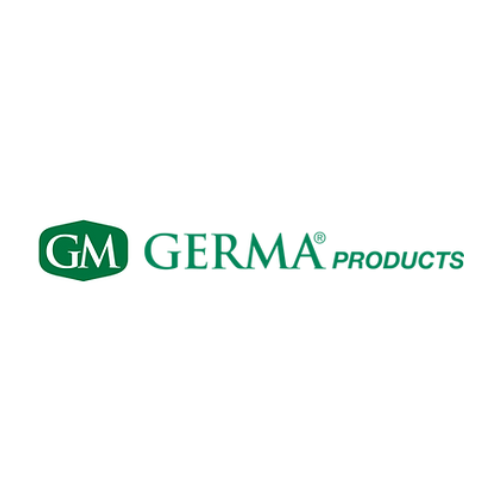
The 5-Step System to Launching Your First Profitable Amazon FBA Product
Imagine making big bucks on Amazon without actually touching your product!
All you have to do is just to manage your listings from your Amazon Seller Central account while everything else works on autopilot.
This is what Amazon FBA does for you. Launching a profitable product on Amazon usually looks like an unsolved riddle but this will not be the case anymore. This piece of reading takes you on a step-by-step journey of the strategic scheme of launching your first profitable product on Amazon using Amazon’s FBA program.
Before diving into the details, let’s have a look at what actually Amazon FBA is.
A Quick Overview of Amazon FBA
In simple understanding, Fulfillment by Amazon (FBA) is an initiative by the world’s largest online marketplace i.e. Amazon that empowers you to outsource all your warehousing, shipping, packing, and dispatching tasks on your behalf.
With FBA, you get to store your inventory in Amazon’s global network of fulfillment centers. When a customer places an order, Amazon ships it from its warehouse directly to the customer’s address.
In short, Amazon does all the heavy lifting for you. While you focus only on one thing - growing your sales.
Now, let’s dive into the details.
Why Amazon FBA?
The first and foremost advantage that you get with Amazon FBA is that your products will be eligible for Prime Benefits and will enter into the list of Prime Badge. Most shoppers have been observed to prefer the products with this badge. It simply means Amazon will deliver your product in two days to Prime members and will offer free shipping for all Amazon customers. A remarkably significant boost can be observed in the sales with these added offerings.
Secondly, you will not have to engage in the hassle of managing a warehouse for inventory storage and an in-house team for carrying out packing, labeling, and shipping of your product. With FBA, you will get the profits directly into your account without actually touching your product.
The cherry on top: Amazon will manage customer queries and extend customer support on your behalf.
Amazon FBA is so incredible that you can manage it as a side hustle along with your full-time job. All you need is a clear road map, a high-demand product, and a reliable supplier that ships the inventory on your behalf to the Amazon fulfillment centers.
Let’s dive into the 5-step system from beginning to end.
Step 1: Market Research
Market research is perhaps the most crucial step. It sets the foundations for the growth of your business on Amazon. It covers a whole lot of exercises from analyzing market trends and demand, and the formal decision to adopt a particular product for launching on Amazon. The identification of the niche must be done on the basis of two key indicators.
High Demand
When it comes to analyzing the demand, experts suggest that you must choose a niche and product category that attracts the sale of around 300 pieces per month at least. It makes roughly 10 sales daily.
To be on the perfectly safe side, it is advisable to go with the niches of routine usage like Food & grocery, health & household, office products, personal care, pet products, tools & home improvement, and toys and games, etc.
With these products, you will not have to spend time and effort on their branding. Since they are already in high demand, you would only need a better price positioning to get your sales rolling.
Profitability
Under this area of market analysis, you will have to do competitor research on Amazon in order to have a general estimate of the prices of your products. Once you get this idea, the estimation of profits will become easier. In this connection, experts suggest that the products that offer a healthy profit margin are those that sell within the price bracket of $10 to 70$.
With these factors in consideration, you will get to decide on a product category and specific products to launch. Now, you will have to explore different options for product sourcing.
Step 2: Product Sourcing
Once you have decided on a list of products, the next step is to find a long-term, reliable, and most importantly, budget-friendly procurement method. Here you have to wander into the market to the market to look for a supplier that supplies your relevant orders in a retailer-friendly deal. It is important because your end goal i.e. the profit would solely depend on the price in which you get to purchase your inventory.
Different options for product sourcing
There is a wide range of options that Amazon sellers consider before making a final move. The options range from wandering the retail markets to online markets, B2B overseas suppliers, dropshipping, etc. for hunting a deal.
Retail Arbitrage
Purchasing discounted products from retail stores and reselling them on Amazon.
Online Arbitrage
Purchasing discounted products online and reselling them on Amazon.
Drop Shipping
Purchasing products from a retailer or wholesaler after you’ve received an order on Amazon.
Wholesale
Purchasing large volumes of products directly from suppliers and selling on Amazon. This one is the best option for selling through Amazon FBA.
B2B Marketplaces
Buying in bulk from B2B marketplaces overseas, getting them shipped home, and then selling them on Amazon. This is largely known as the Alibaba.com model.
All the options have their respective advantages and disadvantages. Since you don’t have to reinvent the wheel to make big bucks on Amazon. As discussed above, the choice of products that have already penetrated the market would be a great option to make immediate sales. Thus, procuring from the local wholesaler would be a great option.
Exploring wholesale options for product procurement
Wholesale businesses offer a wide range of products at competitive prices, making them an ideal sourcing option for Amazon FBA sellers. Explore different wholesale marketplaces and suppliers to find products that meet your criteria of quality, price, and demand.
Jungle Scout argues that you would be doing business with the wholesaler for the long term. Therefore, you must consider a wholesaler who is responsive, answers all your queries, and even better speaks your native language because communication with the supplier would play a crucial role in making or breaking your business.
Points to remember for choosing a wholesale supplier
Getting retailer-centric wholesale deals is an essential skill for Amazon FBA sellers looking to maximize profitability. Take advantage of bulk purchasing and discounted pricing at wholesale suppliers to secure competitive rates.
In this connection, it would be better to look for options that exclusively offer deals related to Amazon FBA. Moreover, you must prefer the wholesalers that are already based in your country and can ship directly on your behalf to the Amazon fulfillment centers. By this, you will have to spend less on transportation charges.
The most favored products for Amazon FBA
Amazon charges FBA service fees and monthly storage fees based on two factors primarily; the dimensions of your product package and its weight. To make the most of Amazon FBA, you can not ignore the importance of these two factors. So, you will have to Keeping these two factors into prime consideration, you will have to choose those products which occupy minimum space per unit and are sold in smaller weights per unit.
In this context, FBA will become a profitable choice for you if you sell standard products that are smaller and lightweight. In this way, you will succeed in making big bucks while spending less in terms of FBA charges. On the other hand, oversized products can cost you significantly high in terms of FBA charges.
Step 3: Product Listing Optimization
This is the point where you make a digital face of your Amazon store. It is not only important aesthetically but also technically. Here are the things that you must keep in mind while optimizing the product listings.
Crafting compelling product titles and keyword-optimized descriptions
To optimize your Amazon storefront for maximum visibility and conversion, you will have to craft clear, concise, and compelling product titles that include relevant keywords to improve searchability.
Moreover, you will also have to write detailed and engaging product descriptions that highlight key features and benefits. You can either do it on your own or hire a professional SEO copywriter to do it for you. It would be a one-time investment.
Utilizing high-quality images and multimedia
Visuals play a crucial role in driving sales on Amazon, so invest in high-quality product images that showcase your product from multiple angles and in different contexts. Use professional photography to capture attention and convey product quality and value.
Step 4: Marketing and Promotion
To give an initial push to the sales of your listed products, you will have to enhance their visibility. This can be achieved by investing in proper marketing and promotional campaigns. Here are the options that you can avail to leverage your marketing game on Amazon and outside Amazon.
Leveraging Amazon PPC advertising
Amazon PPC (Pay-Per-Click) advertising is a powerful tool for increasing visibility and driving targeted traffic to your product listing. All you have to do is to create targeted ad campaigns using relevant keywords and product targeting to reach shoppers actively searching for products like yours.
Utilizing social media and influencer marketing
Social media platforms like Instagram, Facebook, and TikTok offer opportunities to connect with your audience and promote your Amazon FBA products. You can partner with influencers and brand ambassadors in your niche to reach a wider audience and build credibility and trust in the ecosystem.
If you offer a discounted price than your competitors then advertising the price point will be the best choice from a marketing perspective.
Step 5: Post-launch Optimization and Inventory Management
Your work does not end with the launch of your product on Amazon but it takes a new dimension and encourages you to engage in post-launch optimization efforts. Reaching a maximum among the 310 million worldwide customers of Amazon is the end goal. Not only this but encouraging maximum repeat orders will also bring fortunes to you. You can do this by effectively managing post-launch optimization efforts.
Monitoring sales and customer feedback
Once your product is live on Amazon, it's essential to monitor sales performance and customer feedback closely. Track key metrics like sales volume, conversion rate, and customer reviews to gauge product success and identify areas for improvement.
Pay attention to customer feedback and reviews to address any issues or concerns promptly and ensure a positive shopping experience.
Adjusting pricing strategies for maximum profitability
Pricing plays a significant role in product success on Amazon, so it's essential to regularly evaluate and adjust your pricing strategy based on market dynamics and competitor pricing. Consider factors like demand, seasonality, and production costs when setting prices for your products. Experiment with pricing strategies like dynamic pricing and promotional discounts to maximize profitability while remaining competitive in the marketplace.
While adjusting the prices, you must keep your returns in mind. Jungle Scout suggests that for profit you must aim for 100% ROI. In this way, you will be able to secure about one-third profit on your investment after deducting the landed fees, Amazon fees, and other miscellaneous charges.
Inventory Management on Amazon FBA
Amazon charges on a monthly basis to offer storage space for your products under Amazon FBA. To avoid paying additional charges for Amazon FBA, you will have to strategically manage the supply chain from your wholesale supplier to the Amazon fulfillment centers. Rather than paying big bucks to Amazon with very large quantities, you should keep buying the minimum required quantity from your wholesale supplier.
You will be able to manage this juggling only if you have access to a reliable and responsive wholesaler.
Scaling up the business by continuously sourcing new products.
To sustain long-term success on Amazon, it's crucial to keep innovating and expanding your product portfolio. Continuously research and source new products to add to your inventory, keeping an eye on emerging trends and customer preferences. Diversifying your product offerings can help mitigate risk and capitalize on new opportunities for growth and profitability in the ever-evolving Amazon marketplace.
While scaling your Amazon business, you must accord due consideration to the branding perspective. You must stick to the similar product niches in which you already have nurtured and long-term customers. Additionally, you should necessarily consider adding those products that assure maximum returns on Amazon FBA.
Key Takeaways:
The whole discussion can be summed up in the following key takeaways.
You need to conduct thorough market research to identify profitable product niches and analyze competition and demand.
Utilizing a wholesale partnership to source high-quality products at competitive prices ensures a steady supply for your Amazon FBA venture.
To effectively secure handsome profit margins through Amazon FBA, you will have to look for products with high demand, low weight, and smaller packaging.
You will have to consistently optimize your product listings with compelling titles, high-quality images, and strategic keyword placement to improve the visibility and conversion of your listings.
To give an initial sales push, you will have to implement a multi-channel marketing approach, including Amazon PPC advertising and social media promotion to drive traffic and sales to your product listings.
Rather than storing very large volumes and paying monthly storage charges to Amazon, you will have to strategically manage the supply chain with repeat orders from your supplier to Amazon fulfillment centers.
Continuously monitor sales performance, customer feedback, and market trends to optimize pricing strategies and identify opportunities for expansion and growth.
In short, Amazon FBA can be a wonderful choice if you have a full-time job and you get no time to manage the hassles of packing, shipping, and handling customer queries. Additionally, FBA services also suit those sellers who do not have enough infrastructural or human resources to manage inventory and warehouse.
Above all, you will manage to make big bucks only and only if you have the back of a reliable wholesale supplier.
Are you on the fence to launch your first product on Amazon? Let’s do it together.
Check out our website and discover a treasure of high-demand products at amazing deals.




